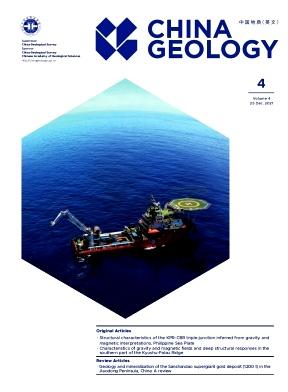Characteristics and ecological risk assessment of antibiotics and hormones in landfill waters
IF 4.7
3区 地球科学
Q1 GEOSCIENCES, MULTIDISCIPLINARY
引用次数: 0
Abstract
Antibiotics, as emerging pollutants, pose significant risks to aquatic ecosystems and human health by disrupting the endocrine systems of aquatic organisms and affecting ecosystem stability through food chain enrichment. In a study conducted in Hebei Province, China, liquid chromatography-triple quadrupole-linear ion trap mass spectrometry (LC-TQ-LIT-MS) was used to analyze 90 different antibiotics in 31 water samples, including surface water, groundwater, and waste leachate from three urban landfills. This analysis included hormones, broad-spectrum antimicrobials, macrolides, tetracyclines, β-lactams, sulfonamides, and quinolones. The study’s results indicated that quinolones, β-lactams, and macrolides were the most frequently detected substances in the landfills. It is noteworthy that the concentrations of these antibiotics varied significantly among different cities, reflecting local production and living characteristics. The results of the tests showed that the concentration of amoxicillin was 1171 ng/L in surface water, 811 ng/L in groundwater, and 1926 ng/L of ciprofloxacin in waste leachate. Furthermore, a consistent pattern was observed between the compounds present in the leachate, groundwater, and surface water at the three sites. Risk assessments revealed that the ecological risk was higher for surface water and lower for groundwater. This study is the first to systematically analyze the pollution status of antibiotics and hormones in the water around the landfill in Hebei Province, which not only fills the blank of groundwater-related research in Hebei Province but also provides key data support and theoretical basis for local groundwater hydrological and environmental detection and pollution prevention.
垃圾填埋场水体中抗生素和激素的特征及生态风险评价
抗生素作为新兴污染物,通过扰乱水生生物的内分泌系统,通过食物链富集影响生态系统的稳定性,对水生生态系统和人类健康构成重大风险。在中国河北省进行的一项研究中,采用液相色谱-三重四极杆线性离子阱质谱(lc - tq - litt - ms)分析了31个水样中的90种不同抗生素,包括来自三个城市垃圾填埋场的地表水、地下水和垃圾渗滤液。该分析包括激素、广谱抗菌剂、大环内酯类、四环素类、β-内酰胺类、磺胺类和喹诺酮类药物。研究结果表明,喹诺酮类、β-内酰胺类和大环内酯类是垃圾填埋场中最常检测到的物质。值得注意的是,这些抗生素在不同城市的浓度差异较大,反映了当地的生产和生活特点。试验结果表明,地表水中阿莫西林浓度为1171 ng/L,地下水中为811 ng/L,垃圾渗滤液中环丙沙星浓度为1926 ng/L。此外,在三个地点的渗滤液、地下水和地表水中存在的化合物之间观察到一致的模式。风险评价结果表明,地表水生态风险较高,地下水生态风险较低。本研究首次系统分析了河北省垃圾填埋场周边水体中抗生素和激素的污染状况,不仅填补了河北省地下水相关研究的空白,也为当地地下水水文环境检测和污染防治提供了关键数据支持和理论依据。
本文章由计算机程序翻译,如有差异,请以英文原文为准。
求助全文
约1分钟内获得全文
求助全文

 求助内容:
求助内容: 应助结果提醒方式:
应助结果提醒方式:


